Photographs: Vijay Mathur/Reuters Sreelatha Menon
Forty years ago Monkombu Sambasivan Swaminathan helped rescue the world from growing famine and a deepening gloom over the future of food supplies. Today, public policy projects itself as pro-farmer but it does it half-heartedly, complains Swaminathan.
M S Swaminathan, member of the National Advisory Council and father of the Green Revolution says the government's allocation for agriculture is insignificant.
Doesn't the Union Budget reflect a new focus on agriculture?
I have got tired of this kind of lip service. In the last budget there was an announcement to encourage 60,000 villages to grow pulses.
But the allocation was so small that each village would have barely got Rs 50,000. Revenue foregone in corporate taxes is Rs 3.75 lakh crore (Rs 3.75 trillion) and you give Rs 300 crore (Rs 3 billion) for a second green revolution. It is all lip service!
You were part of the Jawaharlal Nehru and Indira Gandhi establishments and were even appointed as the agriculture secretary. What is the difference between the governments then and now?
It was totally different then. The country was under pressure. We were importing 10 million tonnes of wheat and the population was only 450 million.
A number of books then said India would not survive and Indians would die like sheep going to slaughter houses. There was political support and determination to make the country self-sufficient. Now all that is gone.
...
Why India will never see a 2nd Green Revolution
Image: A girl carries a pumpkin at a wholesale vegetable market in Chandigarh.Photographs: Ajay Verma/Reuters
The prime minister and the economic survey do vow to bring in a second green revolution. What is the problem then?
Their aim is to bring in foreign companies. They want to hand over the retail sector to Walmart and others. These companies have access to people in power, whether it is Montek Singh Ahluwalia or others.
They are not looking at how small-scale retail and small-scale farming are the largest self-employment sectors in the country.
If you destroy their livelihoods by corporate farming, then what are we talking about? Today, public policy projects itself as pro-farmer but it does it half-heartedly.
So, you don't believe there will ever be another Green Revolution?
Never! For another Green Revolution, you need four ingredients: Technology, which gives a quantum jump in yield; services, like electricity and water; marketing, through a public policy, and lastly, farmers' enthusiasm. The last is the most important input and it is totally absent.
So, there cannot be a second revolution in this country. The NSSO (National Sample Survey Organisation) survey says 45 per cent of the Indian farmers (if given the chance) would not want to continue farming. The Budget has nothing in it to re-instill enthusiasm by improving their incomes.
The National Farmers' Commission had suggested a Mahila Sashaktikaran Yojana and this Budget has omitted it.
...
Why India will never see a 2nd Green Revolution
Image: A potato seller smokes outside his shop at a vegetable wholesale market in Kolkata.Photographs: Parth Sanyal/Reuters
Educated youth do not want to remain in villages and continue farming. Is there something wrong with education or agriculture?
There has to be avenues for non-farm income in villages and that alone can keep the youth from migrating to cities. The farm and non-farm sectors should hold each other up and keep the village prosperous.
The youth can set up agriculture transformation centres, which will deal with farm to plate services like storage, processing and so on.
If every village had these centres and bank loans were made available for them, why would educated youth leave villages?
...
Why India will never see a 2nd Green Revolution
Image: A worker spreads paddy crop for drying in a rice mill complex on the outskirts of Ahmedabad.Photographs: Amit Dave/Reuters
China also brought industry into villages...
No, the original Chinese model in 1980 was about having farm productivity interlinked with non-farm income. The township village enterprises helped them do this.
The report you prepared for the National Farmers Commission has got nowhere. You are still part of the NAC. Do you feel frustrated and angry?
I feel frustrated all the time. So much can be done.
But what you see is the Adarsh and black money scams. Since, there is so much greed revolution in this country, there will be no green revolution.
...
Why India will never see a 2nd Green Revolution
Image: Farmers work in a cucumber field in New Delhi.Photographs: Parivartan Sharma/Reuters
Agricultural land is under attack all the time. There seems to be no law prohibiting acquisition or changing land use of agriculture land.
Land is a shrinking asset. It goes for housing, roads, everything. But prime farm land should be conserved.
When Morarji Desai was the deputy prime minister and finance minister in 1967, we were discussing building of storage areas for wheat.
He wanted a wheat revolution and wanted storage areas built everywhere. For, at that time, we had them only in ports. It was a port-to-mouth existence.
He called a meeting and said storage facilities should be built only on usar land, that is, unyielding land. He was so sensitive to the need to conserve agricultural land.
When he became the prime minister, he called me and said 'I want someone who knows agriculture to be the agriculture secretary'. And he asked me to be the first and last non-IAS agriculture secretary.
...
Why India will never see a 2nd Green Revolution
Image: A farmer shows turnips to a trader at her vegetable field in Jammu.Photographs: Mukesh Gupta/Reuters
The new chairman of Commission for Agriculture Costs and Prices Ashok Gulati is a non-bureaucrat too. But his views contradict yours. He favours markets driving farmers' incomes, while you say farmers should be given a 50 per cent profit and cost of production as a minimum support price.
Gulati's appointment is as grave an error of judgement on the part of the government as the appointment of the CVC.
It does not bode well for agriculture and, more so, for farmers.
The pro-US interests have the upper hand in the government and the pity is that they don't understand the human aspect of agriculture.
...
Why India will never see a 2nd Green Revolution
Image: Labourers cut betel nuts at a cottage industry in Choto Shalkumar village, about 160 km (99 miles) north of Siliguri.Photographs: Rupak De Chowdhuri/Reuters
What is your solution for the continuing agrarian distress?
The national policy for farmers calls for an income orientation to farming and the measurement of agricultural growth in terms of the growth rate in the real income of farm families.
It also calls for an integrated action plan involving higher farm productivity and larger income from non-farm activities like providing end-to-end services.
The government should reap a demographic dividend from the youth population in rural areas by facilitating growth of non-farm end-to-end service centres owned and operated by youths.
That can keep agriculture more remunerative and meaningful for farmers.
Why is the country plagued with malnutrition, despite the high economic growth?
High economic growth reflects neither in food intake nor in the prosperity of farmers. The GDP may be growing but the contribution of agriculture to GDP is going down.
People dependent on agriculture are, however, growing in number. So, people are getting poorer not because of poor productivity, but because plot sizes got reduced.
As for the food intake, the government has a list of programmes that don't seem to be reflected in outcomes of good nutrition. These have to be revisited and the matter has to be looked at holistically.

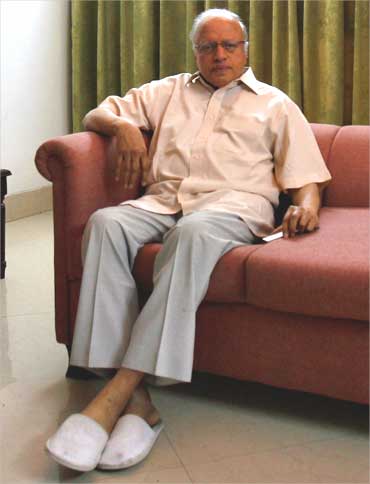

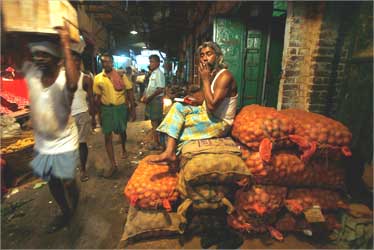
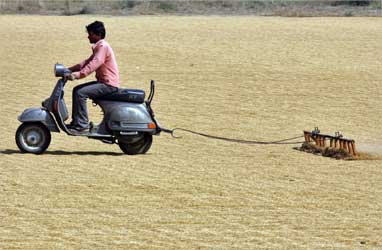
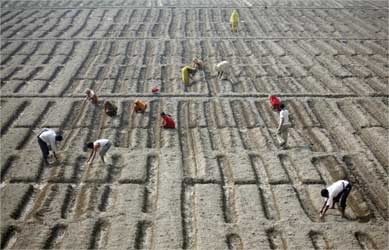
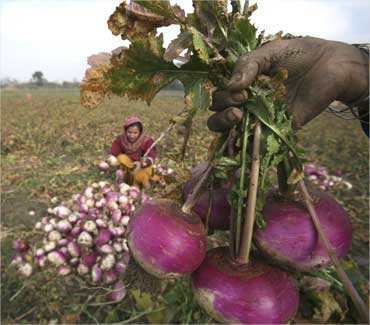
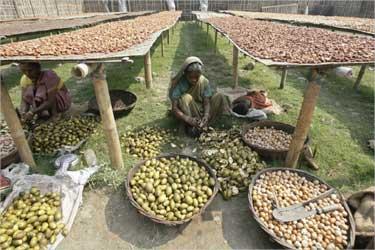
article